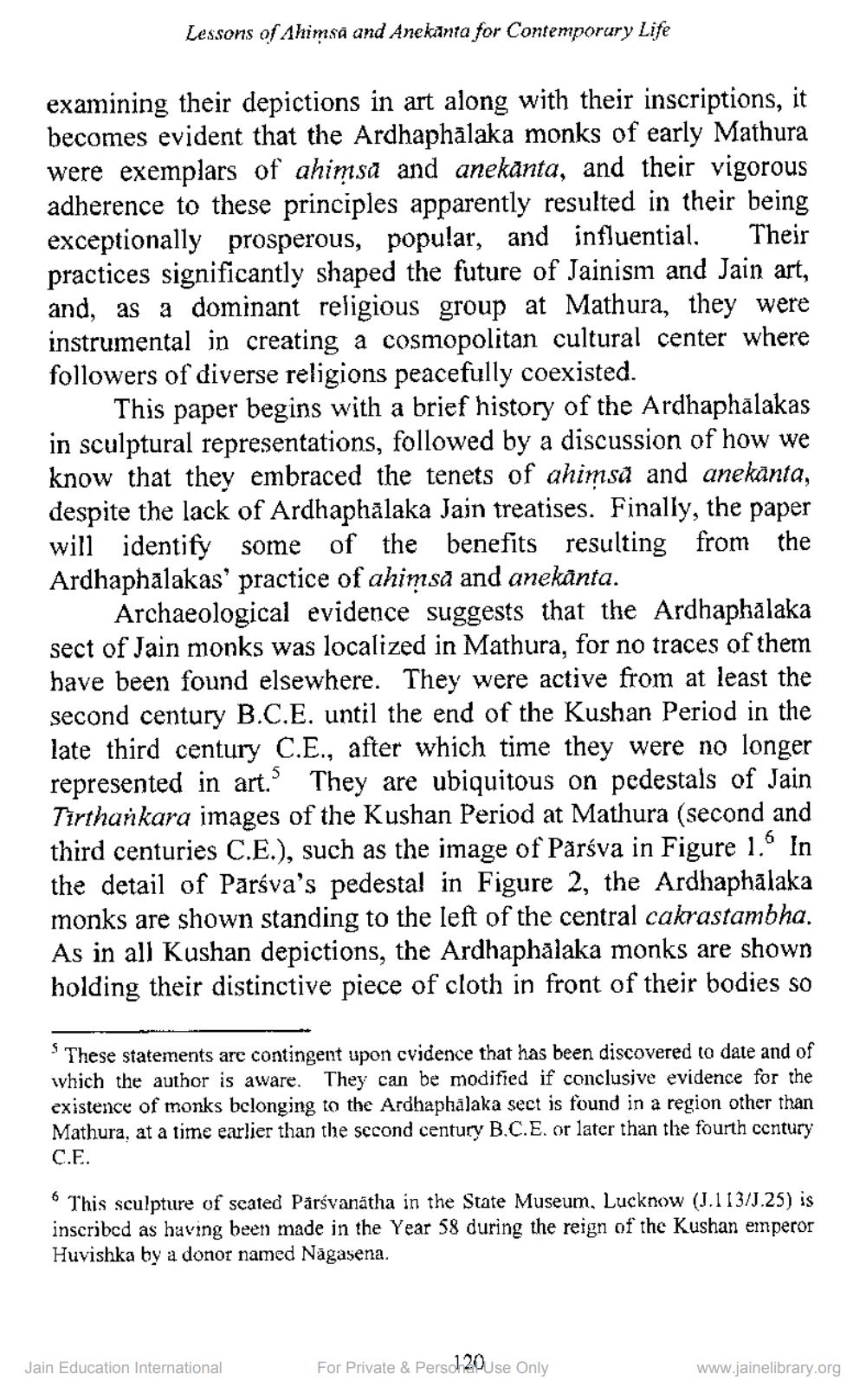________________
Lessons of Ahimsā and Anekānta for Contemporary Life
examining their depictions in art along with their inscriptions, it becomes evident that the Ardhaphālaka monks of early Mathura were exemplars of ahimsa and anekanta, and their vigorous adherence to these principles apparently resulted in their being exceptionally prosperous, popular, and influential. practices significantly shaped the future of Jainism and Jain art, and, as a dominant religious group at Mathura, they were instrumental in creating a cosmopolitan cultural center where followers of diverse religions peacefully coexisted.
Their
This paper begins with a brief history of the Ardhaphalakas in sculptural representations, followed by a discussion of how we know that they embraced the tenets of ahimsa and anekanta, despite the lack of Ardhaphalaka Jain treatises. Finally, the paper will identify some of the benefits resulting from the Ardhaphalakas' practice of ahimsa and anekānta.
5
Archaeological evidence suggests that the Ardhaphalaka sect of Jain monks was localized in Mathura, for no traces of them have been found elsewhere. They were active from at least the second century B.C.E. until the end of the Kushan Period in the late third century C.E., after which time they were no longer represented in art. They are ubiquitous on pedestals of Jain Tirthankara images of the Kushan Period at Mathura (second and third centuries C.E.), such as the image of Parsva in Figure 1.5 In the detail of Parsva's pedestal in Figure 2, the Ardhaphalaka monks are shown standing to the left of the central cakrastambha. As in all Kushan depictions, the Ardhaphalaka monks are shown holding their distinctive piece of cloth in front of their bodies so
S
These statements are contingent upon evidence that has been discovered to date and of which the author is aware. They can be modified if conclusive evidence for the existence of monks belonging to the Ardhaphalaka sect is found in a region other than Mathura, at a time earlier than the second century B.C.E. or later than the fourth century
C.E.
6 This sculpture of seated Parsvanatha in the State Museum, Lucknow (J.113/J.25) is inscribed as having been made in the Year 58 during the reign of the Kushan emperor Huvishka by a donor named Nagasena.
Jain Education International
For Private & Persd20 he Use Only
www.jainelibrary.org




